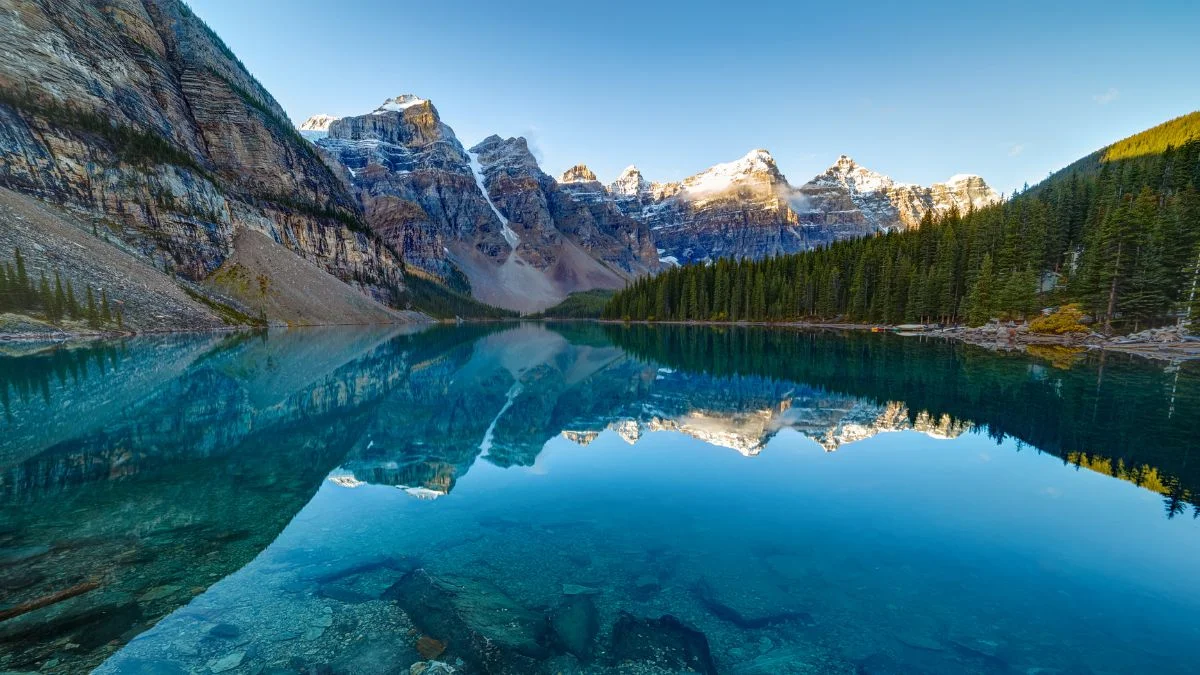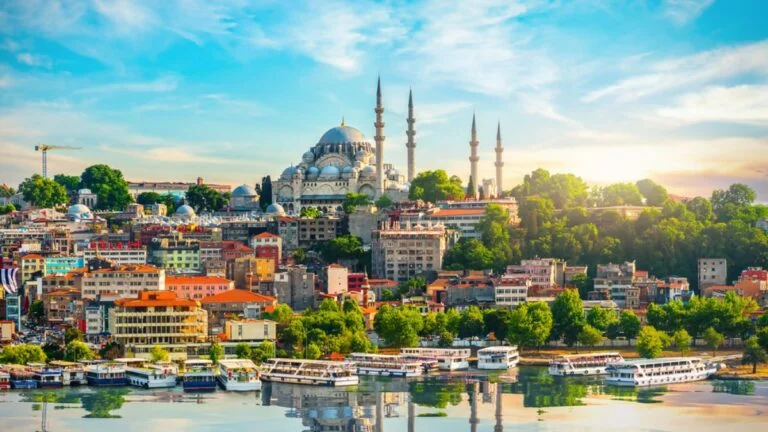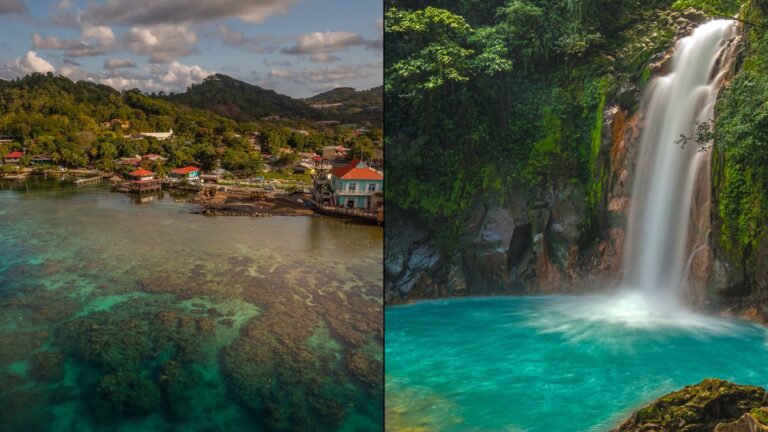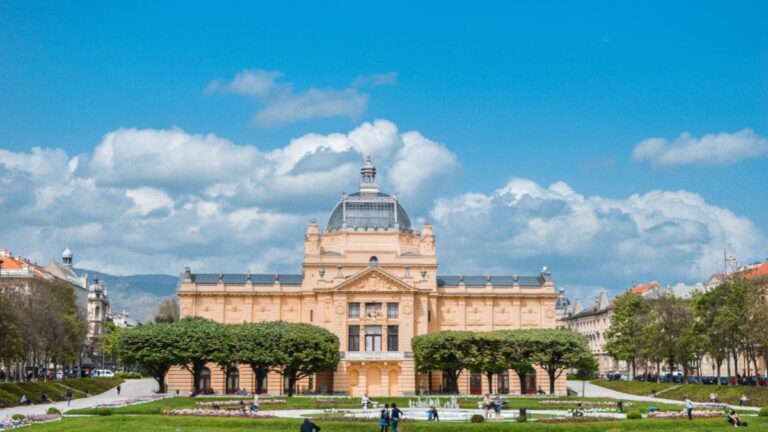Worst Time to Visit Canada: Addressing Winter Cold and Busy Summers

As participants in Amazon Associates and other programs, we earn from qualifying purchases. This comes at no additional cost to you. For more details, see our Affiliate Disclosure.
Canada, a country renowned for its vast landscapes, cultural richness, and scenic beauty, is a prime destination for travelers worldwide. However, like every gem, it has its imperfections. From the bone-chilling cold of its winters to the bustling crowds of its summer months, there are times when visiting this northern wonder might not be ideal. This article delves into the challenging aspects of Canadian seasons, guiding potential visitors to make well-informed decisions about their travel plans.
HIGHLIGHTS
- Canada’s peak tourist season during the summer months often results in increased prices, crowded attractions, and bustling city centers.
- The shoulder seasons, particularly late spring and early fall, provide a balance of moderate weather and reduced tourist numbers, offering potential cost savings.
- Traveling during off-peak times, especially transitional periods of late fall and early winter, can lead to the most competitive prices and quieter experiences.
Embracing the Cold: Understanding Canada’s Winter
Canada, the world’s second-largest country, stretches from the US border in the south to the Arctic Circle in the north, making its winter experiences vast and varied. Understanding the intricacies of Canada’s winter is key for anyone considering a trip during the colder months.
1. The Depth of the Cold: For many, Canada is synonymous with freezing temperatures. In some regions, particularly the northern provinces and territories, temperatures can plummet to -40°C (-40°F) or even lower. It’s not just the readings on the thermometer that one needs to brace for, but the wind chills that can make the cold feel even more biting.
2. Duration and Snowfall: Winter in Canada doesn’t make a fleeting appearance. It can begin as early as October and linger till April, depending on the region. Snow is plentiful, turning cities and landscapes into winter wonderlands. Cities like Québec and Ottawa celebrate the snow with winter festivals, offering a unique experience for tourists.
3. Varied Winter Experiences: Not all of Canada experiences the same intensity of winter. While the Prairie provinces might be grappling with intense cold, coastal British Columbia, especially Vancouver, enjoys milder temperatures, though it’s wetter due to Pacific rains.
4. Preparation is Key: If you’re planning to visit Canada in winter, arming yourself with the right gear is essential. This includes thermal clothing, insulated and waterproof boots, mittens, and a warm hat. Layering is a strategy many Canadians swear by.
5. Winter’s Silver Lining: Despite the cold, winter in Canada is breathtakingly beautiful. Frozen lakes, snow-covered mountains, and the elusive Northern Lights in the northern territories turn Canada into a real-life winter fairy tale.
While Canada’s winter can be formidable, it’s also filled with unmatched beauty and unique experiences. Embracing the cold means not just preparing for it physically, but mentally opening oneself to the wonders it brings.
Winter Activities: Pros and Cons
Canada’s winter, though chilly, offers an array of activities that attract both locals and tourists. From skiing on world-class slopes to ice fishing on frozen lakes, the options are as varied as they are exciting. However, like any destination, there are both advantages and drawbacks to consider. Here’s a breakdown of the pros and cons of winter activities in Canada.
1. Skiing and Snowboarding
- Pros:
- Access to renowned ski resorts like Whistler in British Columbia and Banff in Alberta.
- Opportunities for both beginners and professionals.
- Stunning mountain vistas and pristine snow conditions.
- Cons:
- Can be expensive once you factor in gear, lift tickets, and accommodation.
- Risk of injuries or avalanches in certain areas.
- Weekend and holiday crowds at popular resorts.
2. Ice Skating and Hockey
- Pros:
- Iconic experiences like skating on Ottawa’s Rideau Canal, the world’s largest naturally frozen skating rink.
- Local community rinks provide a chance to mingle with residents.
- Cons:
- Weather dependency – too warm, and ice conditions can be unsafe.
- Potential for injuries if not adequately equipped or inexperienced.
3. Snowshoeing and Cross-Country Skiing
- Pros:
- A peaceful way to explore Canada’s winter landscapes.
- Suitable for all fitness levels and generally more affordable than downhill skiing.
- Cons:
- Requires appropriate clothing to prevent hypothermia.
- Can be physically demanding over long distances or rough terrains.
4. Ice Fishing
- Pros:
- A quintessential Canadian experience.
- Offers a tranquil and meditative environment.
- Cons:
- Requires specific equipment and knowledge about safety protocols.
- Success isn’t guaranteed – you might not catch anything!
5. Winter Festivals and Events
- Pros:
- Provides a cultural insight, like Québec City’s Winter Carnival.
- Filled with fun activities, parades, and unique food experiences.
- Cons:
- Can be crowded, especially the significant events.
- Cold weather might require frequent indoor breaks.
6. Northern Lights Viewing
- Pros:
- A once-in-a-lifetime experience to see the aurora borealis.
- Canada’s northern regions are among the best places in the world for this.
- Cons:
- Requires traveling to remote areas, often with limited amenities.
- Sightings aren’t guaranteed and depend on solar activity and clear skies.
While Canada’s winter activities are plentiful and enticing, they come with their set of challenges. By weighing the pros and cons, visitors can tailor their itinerary to match their preferences, ensuring a memorable winter experience.
Summer’s Double-Edged Sword: Warmth and Crowds
The allure of summer in Canada is undeniable. Long days bathed in sunshine, the inviting warmth, and a vast array of activities beckon travelers from every corner of the world. Yet, summer in Canada is a double-edged sword. While the season unfolds a tapestry of picturesque landscapes and outdoor adventures, it also brings along the inevitable surge in tourists. Here’s a closer look at the dual nature of Canada’s summer season.
The Beauty of Canadian Summers
Warmth and Longer Days: Gone are the icy roads and snowy trails. Summer offers temperatures that are comfortable, and in some regions even hot, perfect for exploring outdoors. The extended daylight hours, especially in northern parts, mean more time for fun.
Outdoor Festivities: From music festivals in Montreal to Calgary’s iconic Stampede, summer is when Canada comes alive with celebrations.
Diverse Activities: Hiking, kayaking, camping, or simply lounging at one of the country’s many beaches — the options are boundless.
The Downside of Popularity
Bustling Tourist Spots: Places like Niagara Falls, Banff National Park, and Vancouver can get particularly crowded. This often means long wait times, crowded trails, and difficulty securing accommodations.
Higher Prices: The influx of tourists can lead to increased prices, be it for hotel stays, attractions, or even certain restaurants. Planning and booking in advance becomes crucial.
Environmental Concerns: With more people comes more strain on the environment. Popular hiking trails and camping spots can face littering and degradation if not treated with respect.
Striking a Balance
Off-Peak Travel: Consider traveling during the shoulder seasons (late spring or early fall) when the weather is still pleasant but the crowds are thinner.
Alternative Destinations: Instead of the most popular spots, seek out lesser-known gems that offer similar experiences without the masses.
Respect the Environment: Travel sustainably. Stick to marked trails, pack out what you bring in, and consider using public transportation when available.
Summer in Canada is a radiant blend of warmth and wonder, but it’s essential to be prepared for its popularity. With a bit of research and flexibility, one can experience the magic of Canadian summers minus the pitfalls of its peak tourist season.
The Peak of Tourist Season: What to Expect
The vibrant months of June, July, and August represent Canada’s peak tourist season. As schools break for summer and the weather turns favorably warm, both domestic and international tourists flock to the country’s prime destinations.
National parks and heritage sites such as Banff, Jasper, and the historic districts of cities like Quebec and Ottawa, become particularly busy. The influx translates to longer waiting times at attractions, increased traffic, and a bustling ambiance in popular areas.
Accommodations can be a challenge. Hotels, bed & breakfasts, and vacation rentals in tourist hotspots often book up months in advance. Prices, due to high demand, tend to be steeper compared to other times of the year.
On the brighter side, the lively atmosphere means that there’s always something happening. Street performers, festivals, open-air markets, and concerts are commonplace, infusing the cities and towns with an energetic summer spirit.
However, the busy season also mandates a level of preparedness. Visitors are advised to make reservations early, plan their itinerary with some flexibility, and brace for larger crowds. Embracing the buzz and the occasional inconveniences is part and parcel of traveling during Canada’s peak summer months.
Alternatives: When is the Best “Worst” Time to Visit?
When considering a trip to Canada, venturing during the so-called “off-peak” or “shoulder” seasons can be a savvy move for the discerning traveler. These periods offer a delicate balance: the allure of Canada’s natural beauty remains, but the significant tourist crowds are notably thinner.
Late Spring (May to early June) is a promising window. As the nation shakes off its winter frost, the landscape starts to bloom. Tourist attractions are opening, but the summer rush hasn’t fully commenced. Cities are lively, yet not overcrowded, and the weather is generally mild, making it ideal for city tours and early hikes.
Early Fall (September to October) presents another sweet spot. The summer tourists have begun their homeward journeys, and the local landscapes are awash with the mesmerizing hues of autumn. The temperatures are cooler but remain comfortable for most outdoor activities. Additionally, this is the season for some of the country’s best harvest festivals.
For the truly adventurous, early Winter (late November to early December) can be magical. The heavy snow hasn’t typically set in, but the winter ambiance is beginning to build. It’s a serene time to visit, especially before the holiday rush starts.
While summer and winter peaks have their unique charms, the transitional phases of the Canadian year offer distinct experiences. These “worst” times, in many ways, might just be the hidden gems for those looking for a different kind of Canadian adventure.
Navigating Travel Costs: Seasonal Price Differences
Canada, with its sprawling landscapes and cultural hubs, is undoubtedly a dream destination for many. However, how much you spend on your Canadian adventure can significantly fluctuate based on the time of year you choose to visit. Recognizing these seasonal price differences is crucial for budget-savvy travelers.
During the peak summer months of June, July, and August, everything from accommodation and attractions to airfares can see a surge in prices. Popular tourist spots like Vancouver, Toronto, and the renowned national parks might hike their prices due to the substantial demand. Simultaneously, the warmer months bring a plethora of festivals, events, and open attractions, potentially offering more bang for your buck.
The winter season, specifically around the holidays in December and the ski peak in January and February, is another high-cost period. Tourist areas renowned for winter sports, like Whistler or Banff, tend to see a spike in accommodation and activity prices. But for the snow enthusiasts, this might be a price worth paying for world-class ski slopes and winter wonderlands.
On the flip side, the shoulder seasons— late spring (May to early June) and early fall (September to October) — typically offer reduced prices in comparison to peak periods. Airfares are often more reasonable, accommodations more abundant and affordable, and car rentals might come at a discount. Plus, the country’s natural beauty during these transitions is nothing short of breathtaking.
Lastly, the periods that see the least influx of tourists— late fall and early winter (November and early December) and the latter part of winter into early spring (late February to April) — usually offer the most competitive prices. While some attractions might be closed or limited, and the weather can be a bit unpredictable, those willing to brave the elements might find the best deals during these times.
Balancing Experience and Comfort: Making an Informed Decision
Journeying to a destination as vast and varied as Canada necessitates a bit of introspection. It’s not merely about the best sights or activities on offer, but also about the personal comfort and experience one seeks. Making an informed decision means striking a balance between what Canada promises and what you desire as a traveler.
Every season in Canada paints a distinct picture. Summer presents warm days filled with bustling festivals, lively streets, and endless outdoor adventures. Conversely, winter transforms the landscape into a snow-draped haven for winter sports enthusiasts and those charmed by the icy beauty. However, with these experiences come challenges—summer’s overwhelming crowds and winter’s frigid temperatures.
For those not keen on battling the extremes, the shoulder seasons—spring and fall—offer moderate temperatures and fewer tourists. Yet, these times may come with unpredictable weather patterns, demanding flexibility in plans.
Another factor to weigh is cost. Peak seasons, while offering a plethora of activities, tend to be more expensive. Off-peak times, on the other hand, can be kinder on the wallet but might not offer the full spectrum of experiences.
Ultimately, the decision rests on personal preferences. Are you willing to trade comfort for a specific experience, like witnessing the Northern Lights or attending a prominent summer festival? Or do you prioritize a relaxed, crowd-free environment over specific seasonal activities?
It’s also essential to consider individual thresholds for things like cold, heat, and budgetary constraints. Conversations with previous travelers, reading reviews, and even understanding the local climate and events can aid in making a choice.






